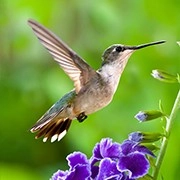Rajasthani Puppets: Folk Art

Rajasthani puppets, known as Kathputlis, are an iconic symbol of Rajasthan's rich cultural heritage.
These intricately crafted, colorful dolls aren't just puppets; they are storytellers of history, folklore, and tradition that have enchanted audiences for centuries.
Made by skilled artisans, Rajasthani puppets embody a unique blend of art, culture, and craftsmanship, representing the spirit of Rajasthan through their vibrant attire, expressive faces, and elaborate details.
History of Rajasthani Puppetry
Ancient Art with Royal Origins
The art of puppetry in Rajasthan traces back over a thousand years and is rooted deeply in the region's history and royal traditions. Puppetry was once a favored form of entertainment in royal courts and among villagers, who would gather to witness thrilling performances that depicted stories of valiant kings, queens, and folk heroes. The Bhat community of Rajasthan, credited as the original puppeteers, passed down this art through generations.
The Tabla: An Ancient North Indian Musical Instrument from Mysterious India!
Henna Art in India: A Timeless Tradition of Beauty and Celebration! Try Today!
Wishing You a Fantastic Halloween! Have You Picked Your Costume Yet?
Tips For Selecting Festive Flowers For Perfect Celebrations! Let's Start Then!
Rajasthani Traditional String Puppets: The Art of Storytelling and Super Fun!
Is Shirodhara Really Good? Worth The Hype! Let's Find Out!
A Medium of Cultural Narratives
Rajasthani puppets have long been used to convey moral lessons, traditional tales, and historical events. Their stories often incorporate folklore, tales of bravery, romance, and ethical dilemmas, making each puppet performance not only entertaining but educational, with narratives reflecting the values and life lessons of Rajasthan's heritage.
Craftsmanship Behind Rajasthani Puppets
Creating the Puppet Structure
The process of making Rajasthani puppets is intricate and requires patience, precision, and artistic flair. These puppets are traditionally made from wood, cloth, and wire, with artisans carving the heads out of wood and painting them in vibrant colors. Each puppet has exaggerated facial features—big eyes, arched eyebrows, and curved mustaches—that convey emotions vividly.
Colorful Attire and Accessories
One of the most striking aspects of these puppets is their attire, inspired by Rajasthani clothing. Brightly colored fabrics, small mirrors, and sequins adorn the puppets, often with traditional prints and patterns. The puppets wear elaborate outfits matching the characters they portray, from regal costumes for kings and queens to simpler attire for common folk. Artisans use traditional dyes and embroidery techniques, adding to the uniqueness of each puppet.
[4K] Kathputli puppet dance | Traditional art of Rajasthan
Video by ART & ANGLE Videos
The Art of Puppetry Performance
Traditional Kathputli Performances
Kathputli shows, or puppet performances, are a captivating experience where skilled puppeteers control the puppets with strings, breathing life into each character with precise movements and expressive storytelling. The puppeteer's movements are often accompanied by rhythmic folk music, and a narrator provides the storyline, blending dialogue with traditional Rajasthani songs.
Modern Adaptations and Global Appeal
While traditional stories dominate Kathputli performances, puppeteers today are experimenting with contemporary themes and even modern issues, broadening the appeal of these shows. Additionally, the global fascination with Rajasthani puppetry has led to international tours and exhibitions, allowing this beautiful art form to reach audiences around the world.
Symbolic Importance of Rajasthani Puppets
Beyond entertainment, Rajasthani puppets represent the resilience and spirit of Indian folk culture. They are a celebration of Rajasthan's artistry and storytelling tradition, offering a tangible connection to the region's past. Each puppet, handcrafted and unique, is a cultural ambassador, sharing Rajasthan's legacy of folklore and art with the world.
Collecting and Preserving Rajasthani Puppets
For those who appreciate traditional art, owning a Rajasthani puppet is like possessing a piece of India's cultural history. These puppets are available in local markets across Rajasthan, such as Jaipur's Bapu Bazaar and Jodhpur's Sardar Market. Collectors and art enthusiasts often display them as decorative items, while others purchase them to support the local artisans who continue this age-old craft.

Rajasthani puppets, with their colorful attire and animated storytelling, hold a cherished place in Indian culture. These Kathputlis are more than art—they are carriers of Rajasthan's legacy, keeping alive the tales, traditions, and values of India's desert land.
Dear Lykkers, if displayed as traditional decor or enjoyed in a performance, Rajasthani puppets are a timeless expression of India's artistic and cultural heritage.

 · Lifestyle team
· Lifestyle team